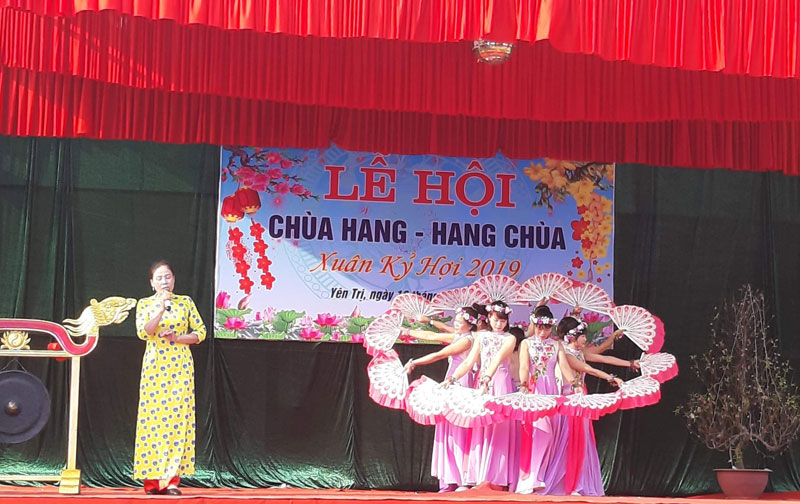
(HBO) - The Hang Pagoda - Chua Cave Festival kicked off in Yen Tri commune, Yen Thuy district of Hoa Binh province on February 19 (the 15th day of the first lunar month).
Hang Pagoda was recognized as a national
historical and cultural relic site by the Ministry of Culture and Information
(now the Ministry of Culture, Sports and Tourism) in 1994. The pagoda,
including two ancient pagodas, is located on a cliff. It was built by predecessors
a long time ago and was embellished during the reign of King Khai
Dinh.
During the two resistance wars against the French colonialists and the American
imperialists (1955-1975), Hang Pagoda served as the headquarters of the Vietnamese
army and was the place where the army hid weapons and food to serve the
resistance wars.

Art performance at the festival
The Hang Pagoda festival offers a chance
for tourists and local people to visit the pagoda. Everyone offers an incense to express their
respect to the Buddha, and pray for health, happiness and prosperity.
The festival includes incense and flower offerings
to pray for peace and health. Meanwhile, festive activities are art and culture
performances and volleyball competitions among teams of hamlets in the commune./.
The People’s Committee of Lac Son district held a ceremony on April 28 to receive the provincial relic certificate for the ancient rock carving site at Suoi Co stream, located in My Thanh commune.
A special music show titled "The country is in the fullness of joy” has been held at Hoa Binh Square in Hoa Binh city in celebration of the 50th anniversary of the liberation of the South and national reunification (April 30, 1975–2025).
The People's Committee of Lo Son commune, Tan Lac district, has organised the local annual traditional stream fishing festival on April 19 - 20.
As a land deeply intertwined with human history and Vietnam’s millennia-long journey of nation-building and defence, Hoa Binh is often revered for its epic tales and legends.
Residents of Hoa Binh boast a rich cultural identity, reflected in their unique language, traditional attire, customs, and folk melodies – described as "sweet as honey, clear as a mountain stream.”
Lac Son district’s Vu ban town held the 2025 Truong Kha temple festival on April 12–13 (the 15th–16th days of the third lunar month). Since its revival in 2019, the festival has been organised every three years, preserving valuable intangible heritage while meeting the community’s cultural and spiritual needs.



